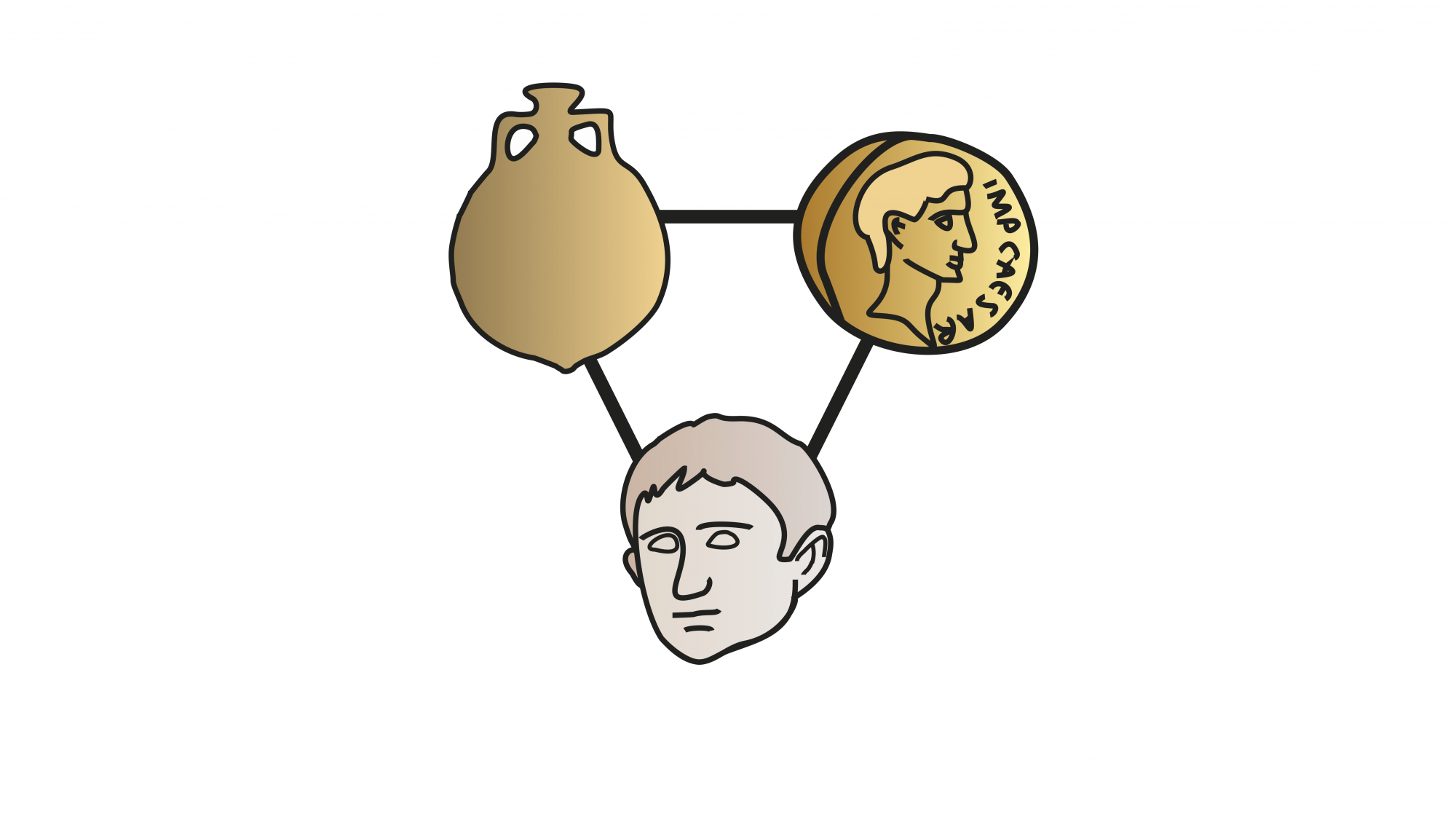Published as:
Romanowska I, Brughmans T, Bes P, Carrignon S, Egelund L, Lichtenberger A, and Raja, R. (2021) A Study of the Centuries-Long Reliance on Local Ceramics in Jerash Through Full Quantification and Simulation. Journal of Archaeological Method and Theory. doi:10.1007/s10816-021-09510-0
In short
- What drove a consumer at a Roman market to buy one of multiple comparable products when a locally produced product was available?
- What can explain the almost total dominance of local pottery during six hundred years in the archaeological record of Jerash (Jordan)?
- Aim: Explore whether theories of product preference can explain changes in the proportion of local versus imported ceramics at the site of Jerash.
- Method: ceramic data analysis at the site of Jerash, simulation of the effect of cultural transmission theories (e.g. unbiased, conformist bias, rarity bias) on the long-term consumption patterns of ceramic products.

A bit longer
Recent excavations by the Danish-German Jerash Northwest Quarter Project, performing a full quantification of the excavated pottery, revealed an interesting pattern: For a period of six centuries 99 % of the almost 1 million recorded ceramic sherds across all twenty-four trenches and contexts was locally produced; there are almost no imports and regional ceramic products. What caused this persistent dominance of locally produced pottery?
A large number of factors could account for the dominance of local pottery at Jerash: its size, its integration in the ancient transport system, its seemingly extreme local pottery-production capacity and its hinterland’s suitability for local foodstuff and craft production. Ancient Gerasa, present-day Jerash in Jordan, was a medium-sized urban settlement during the Roman, Byzantine and Umayyad periods. It was located at some distance away from main roads in the region, such as the Via Nova Traiana, but still relatively well connected within the ancient transport system in a similar way as other medium-sized settlements in the region (Raja 2012). Similarly, its hinterland was a fertile area with relatively good access to natural resources allowing for a degree of self-sufficiency in foodstuffs and craft products, but as a city it has not been defined by either a great abundance or distinctive lack of any one particular resource.
One factor that puts Jerash apart from other similar medium-sized urban centres, such as Gadara, Pella and Scythopolis, is its self-sufficiency in terms of craft production, in particular in respect to the local pottery repertoire (cf. Tarboush 2015: 120-121). The virtually exclusively locally produced pottery at the site is not a sign of the residents’ lack of wealth as they clearly had enough disposable income to fund large-scale monumental architecture. Neither is this a sign of disconnection from the major transport routes as various raw materials imported from all four corners of the ancient world attest (Lichtenberger & Raja 2017). The exceptional nature of this phenomenon becomes clear in light of comparisons with other urban centres in the region with comparable geographical settings and economic situations (e.g. Pella, Gadara, Hippos and Scythopolis). These uran centres have significantly more diverse ceramic assemblages consisting of a combination of local products with regional and overseas imports, although it is clear that in the future further geochemical, basic research is needed to distinguish local from regional pottery production (on Pella cf. Watson 1992: esp. 237; on Gadara cf. El-Khouri 2014; on imports in Hippos cf. Młynarczyk 2014. Regarding local amphora production in Scythopolis that was traded regionally cf. Bar-Nathan & Atrash 2011).
These factors in combination might explain why less imported and regional pottery can be expected at Jerash, but not the virtually complete absence of those products for a period of six centuries. The archaeological evidence of Jerash points towards a degree of self-sufficiency in craft products which sets it apart from comparable towns in the region: why? What can explain the strong reliance for centuries of the Jerash urban community on locally produced craft products? Another (possibly social) factor must be at play and the Northwest Quarter in Jerash with its fully quantified pottery dataset offers the perfect case study to explore the impact of social processes on craft-product consumption in middle-sized ancient cities. A range of product preference theories including pre-deopistional bias, conformist bias, wealth bias, quality bias and many more, will be formally represented in computational models. The ability of these theories in isolation or in combination to reproduce the six century long archaeological record in Jerash will be tested. This research will lead to a better understanding of the economy of middle-sized urban settlement, and will illustrate how computational simulation modelling even on a single-site scale can lead to useful new insights.
Acknowledgements
This work was supported by the Carlsberg Foundation, the Danish National Research Foundation under the grant DNRF119–Centre of Excellence for Urban Network Evolutions (UrbNet), Deutsche Forschungsgemeinschaft (LI 978/4), Deutscher Palästina-Verein, the EliteForsk initiative of the Danish Ministry of Higher Education and Science, H. P. Hjerl Hansens Mindefondet for Dansk Palæstinaforskning, the Leverhulme Trust funded MERCURY project (ECF-2016-197), the European Union’s Horizon 2020 Research and Innovation Programme under the Marie Skłodowska-Curie grant agreement no 754513 and the Aarhus University Research Foundation. Open access fees by the DNRF119 grant directed by Rubina Raja.
